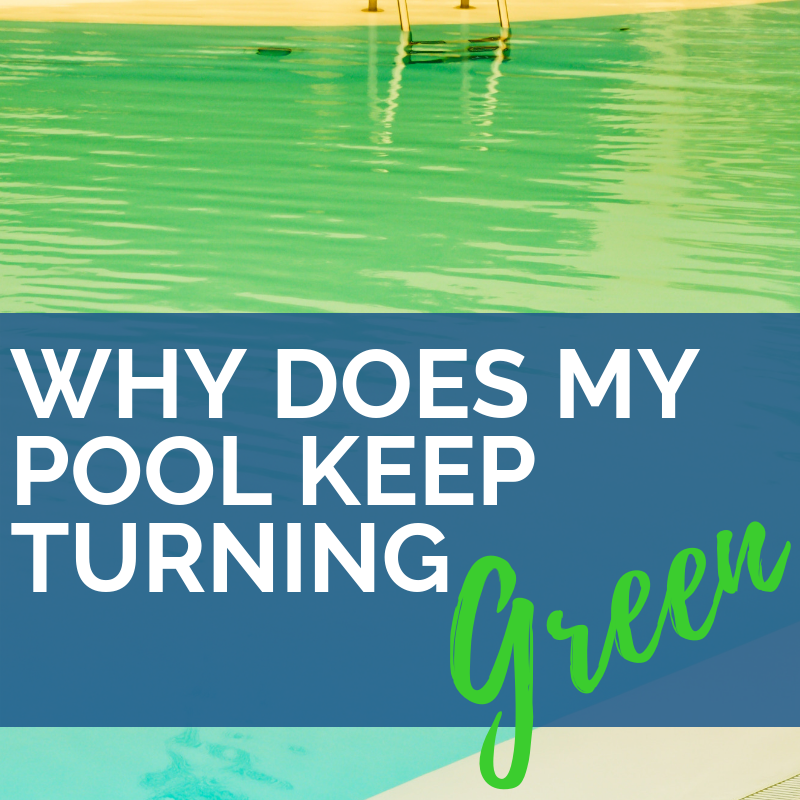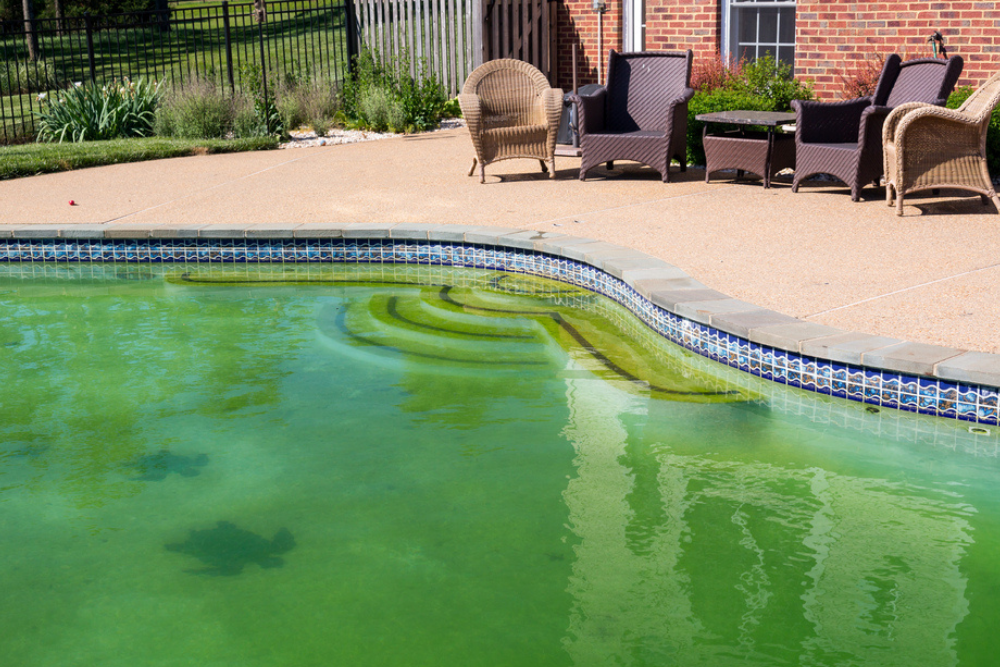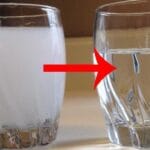Is your pool looking more like a swamp than a refreshing oasis? If you’ve been battling against the relentless green invasion in your backyard paradise, you’re not alone.
It’s frustrating to see your crystal-clear waters turn murky and uninviting. You might be wondering, “Why does my pool keep turning green? ” And more importantly, “How can I stop it for good? ” In this post, we’ll dive into the common culprits behind this green menace and uncover effective strategies to reclaim your pool’s pristine glory.
Whether you’re a seasoned pool owner or new to the game, understanding the root causes of algae growth and cloudy water is essential for maintaining a healthy, inviting swimming environment. Stick with us, and you’ll soon have the knowledge to keep your pool sparkling all season long.

Credit: blog.royalswimmingpools.com
Common Causes Of Green Pools
Ever found yourself gazing at your pool, wondering why it’s suddenly transformed into a murky green swamp? You’re not alone. Many pool owners face this frustrating issue. Understanding the common causes can help you tackle the problem effectively and restore your pool’s sparkling clarity. Let’s dive into the usual culprits behind green pools.
Algae Growth
Algae is often the main villain when it comes to green pools. These tiny plant-like organisms thrive in warm, sunny conditions, especially when your pool is neglected for a few days. Have you ever skipped your regular cleaning routine? Algae love this. They can quickly spread, turning your pool water green.
To combat algae, maintain regular cleaning and vacuuming. Scrub those pool walls and floors often. Consider adding algaecide to your pool maintenance routine. This can prevent algae from settling in.
Chemical Imbalance
Maintaining the right chemical balance in your pool is crucial. If chlorine levels drop or pH levels spike, your pool becomes a breeding ground for algae. Have you tested your pool water recently? A simple test can reveal if your pool’s chemical levels are off.
Regularly check and adjust chlorine and pH levels. Invest in a reliable pool water testing kit. This small step can save you a ton of hassle. Remember, prevention is better than cure.
Filtration Issues
Your pool filter plays a vital role in keeping your water clear. If it’s not working properly, debris and algae can accumulate, leading to green water. Is your filter clogged or in need of repair? A quick inspection might reveal the issue.
Clean your filter regularly and ensure it’s running efficiently. Consider upgrading to a more robust filtration system if problems persist. A well-functioning filter is your pool’s best defense against unwanted green hues.
Next time you spot a hint of green, consider these common causes. Addressing them promptly can keep your pool inviting and clear. Ready to get your pool back to a crystal blue?

Credit: bioguard.com.au
Algae Types And Characteristics
Pool owners often face the frustrating issue of green water. This is mainly due to various types of algae invading the pool. Understanding the different types of algae can help in managing and preventing them. Each algae type has unique characteristics, making it important to know how to identify and treat them effectively.
Green Algae
Green algae are the most common type found in pools. They appear as slimy patches or green water. These algae can quickly spread if not treated. They thrive in pools with poor circulation or low chlorine levels. Regular cleaning and proper chemical balance can help prevent green algae.
Mustard Algae
Mustard algae have a yellowish color. They often cling to pool walls and surfaces. These algae are more stubborn than green algae. They can resist normal chlorine levels. Mustard algae require a more targeted approach for removal. They prefer shady areas and can survive outside water for a short time.
Black Algae
Black algae are the toughest to remove. They appear as dark spots on pool surfaces. These algae have a protective layer that makes them resistant to regular cleaning methods. Black algae often grow in cracks or plaster surfaces. They need a special treatment that penetrates their tough exterior.
Chemical Imbalance Factors
Your pool turning green can be a frustrating experience. Often, the culprit is a chemical imbalance. Understanding the key factors can help you keep your pool sparkling clean. Let’s dive into the essential elements that could be causing this issue.
Ph Levels
pH levels play a vital role in maintaining a healthy pool. If the pH is too high or too low, it can lead to algae growth, turning your pool green. Aim for a pH level between 7.2 and 7.8. This range is ideal for keeping algae at bay. Test your pool water regularly and adjust with pH increasers or reducers as needed.
Have you ever tested your pool after a heavy rain? You might notice a shift in pH levels. Rainwater can lower pH, making the water more acidic. This shift can create a breeding ground for algae. It’s crucial to monitor pH after weather changes.
Chlorine Levels
Chlorine is your pool’s best friend in fighting algae. When chlorine levels drop, algae can flourish. Keep chlorine levels between 1 to 3 parts per million (ppm). This range ensures effective sanitization without irritating your skin or eyes.
Ever noticed your pool turning green after a party? Increased usage can deplete chlorine levels. Consider shocking your pool with a higher dose of chlorine to quickly restore balance. It’s a simple fix that can save you a headache.
Cyanuric Acid Impact
Cyanuric acid acts as a stabilizer for chlorine, protecting it from the sun. But too much can hinder chlorine’s effectiveness. Aim for cyanuric acid levels between 30 and 50 ppm. This balance helps chlorine do its job without interference.
Have you been adding stabilizer without checking levels? It’s easy to overdo it. High cyanuric acid can lead to a green pool. Regular testing is key to avoiding this pitfall. Adjust accordingly to maintain the right balance.
Keeping these chemical factors in check can prevent your pool from turning green. Regular testing and adjustments are essential. Are you ready to take control of your pool’s health?

Credit: www.bobvila.com
Effective Filtration Techniques
Keeping your pool water clear and inviting requires effective filtration. A proper filter can prevent your pool from turning green. Understanding filtration techniques is crucial for maintaining a clean pool. Let’s explore the importance of regular cleaning and how to choose the right filter.
Importance Of Regular Cleaning
Regular cleaning helps your filter work efficiently. Dirt and debris clog filters over time. This stops them from cleaning the water well. Clean filters let water circulate properly. This reduces algae growth and keeps your pool clear.
Schedule routine checks to clear your filter. This ensures it operates smoothly. A clean filter is essential for a healthy pool. It helps in maintaining clean and clear water.
Choosing The Right Filter
The right filter is crucial for effective filtration. There are three main types: sand, cartridge, and DE (diatomaceous earth) filters. Each has its pros and cons. Sand filters are simple and cost-effective. They require regular backwashing.
Cartridge filters offer better filtration and are easy to maintain. They need cleaning less often. DE filters provide the best filtration. They need more care and attention. Consider your pool size and usage when choosing a filter.
Select a filter that suits your needs. Proper filtration keeps your pool water sparkling clean. Invest time in understanding filtration types for a better pool experience.
Preventative Measures
A green pool often signals algae growth due to imbalanced chemicals or poor filtration. Regular testing of water pH and chlorine levels helps prevent this. Clean the filter system frequently to ensure clear, healthy pool water.
Having a pool that turns green can be frustrating. It’s not just about aesthetics; it’s also about maintaining a healthy swimming environment. Preventative measures can help keep your pool crystal clear and inviting. By focusing on routine maintenance, proper chemical usage, and regular water testing, you can enjoy a pristine pool all summer long.
Routine Maintenance
Routine maintenance is your pool’s best friend. Keep debris out by skimming the surface daily. Clean the pool walls and floor weekly with a brush and vacuum. Think of your pool filter as its lungs. Check and clean the filter regularly to ensure it’s working efficiently. A clogged filter can lead to cloudy, green water.
Proper Chemical Usage
Using the right chemicals in the right amounts is crucial. Maintain a balanced pH level between 7.2 and 7.6. This range keeps algae at bay and makes chlorine more effective. Chlorine is your pool’s main defense against algae. Regularly check chlorine levels and adjust as needed. Overdoing it can irritate swimmers’ skin and eyes, while too little invites algae growth.
Regular Water Testing
Regular water testing helps catch issues before they become problems. Test your pool water at least once a week. This will help you maintain the right balance of chemicals. Consider investing in a reliable water testing kit. It may save you a trip to the pool store and ensure more accurate results. If you notice persistent problems, seek professional advice. Have you ever noticed your pool turning green despite your best efforts? It might be time to re-evaluate your preventive measures. Taking these steps consistently ensures that your pool stays clean and inviting, so you can enjoy every swim without worry.
Solutions For Green Pools
Is your pool turning green frequently? Algae growth can be a major culprit. Imbalanced chlorine levels and poor filtration often cause this. Regular cleaning and monitoring can help maintain a clear, inviting pool.
Finding your pool turning green can be frustrating, especially when you’re looking forward to a refreshing swim. However, there are straightforward solutions to transform your pool from green to pristine blue. Understanding the reasons behind the algae bloom and applying the right treatments can save you time and effort.
Shock Treatment
A shock treatment is your first line of defense against a green pool. Essentially, you’re adding a large dose of chlorine to your pool to kill algae and bacteria. Ensure your pool’s pH level is balanced before shocking it, as this will maximize the chlorine’s effectiveness. Once, my pool turned an unsightly shade of green just before a party. A well-timed shock treatment saved the day, making the water clear and inviting in just 24 hours. Always follow the manufacturer’s instructions for the correct dosage.
Algaecide Application
Algaecides can be a game-changer when battling persistent algae. These chemicals help prevent algae from returning by breaking down their cell walls. They’re especially useful if your pool tends to turn green often. After I noticed repeated algae blooms, incorporating a regular algaecide application into my maintenance routine kept my pool clear all season. Remember to add algaecide as a preventative measure even when the water is clear.
Professional Help
Sometimes, despite your best efforts, the pool remains stubbornly green. That’s when professional help can be invaluable. Pool experts have specialized tools and knowledge to diagnose and treat stubborn algae issues effectively. Hiring a professional might seem like an unnecessary expense, but it can save you time and frustration. Consider it as an investment in your peace of mind and pool enjoyment. Wouldn’t you rather spend your time swimming than troubleshooting? In addressing your green pool problem, remember these solutions can work wonders when applied correctly. Keep your pool maintenance regular, and enjoy a sparkling blue oasis all season long.
Long-term Pool Care Strategies
Green pools often signal algae problems caused by imbalanced chemicals or poor filtration. Regular cleaning and balanced pH levels can help. Consistent maintenance ensures clear water and keeps algae at bay.
Long-term pool care strategies ensure a sparkling blue pool year-round. A pool turning green often signals poor maintenance. Consistent care can prevent this. Here, we discuss essential strategies for maintaining a clear pool. Each strategy helps keep algae at bay.
Seasonal Adjustments
Each season affects your pool differently. In summer, algae grow faster due to heat. Increase chlorine levels to combat growth. In winter, decrease maintenance frequency. Cover the pool to protect it from debris. Spring requires a thorough cleaning. Fall demands regular leaf removal. Adjust your care plan with each season.
Equipment Upgrades
Old equipment can fail to keep your pool clean. Consider upgrading to energy-efficient pumps. They run quietly and save on electricity. A quality filter is vital. Sand filters need regular backwashing. Cartridge filters need less maintenance. Saltwater systems can reduce chemical use. Newer systems often require less effort.
Consistent Monitoring
Regular monitoring keeps your pool in check. Test water pH levels weekly. Maintain a pH between 7.2 and 7.8. Check chlorine levels often. Ensure they are between 1 and 3 ppm. Alkalinity should range from 80 to 120 ppm. Monitor calcium hardness too. It helps prevent scale buildup. Keep a log of your tests. This practice highlights any irregularities.
Frequently Asked Questions
Why Does My Pool Turn Green Overnight?
Algae growth is rapid. Warm temperatures and sunlight speed up the process. Chlorine levels might be too low.
Can Rainwater Make My Pool Green?
Yes, rainwater can introduce debris and nutrients. These promote algae growth. Regular maintenance helps prevent it.
How Can I Prevent My Pool From Turning Green?
Maintain chlorine levels. Regularly clean the pool and filter. Check pH balance. Algae thrive in unbalanced water.
What Are The Signs Of Algae In My Pool?
Cloudy water and slippery surfaces indicate algae presence. Green tint is a clear sign. Quick action is required.
Is Green Pool Water Harmful?
Green water can harbor bacteria. It’s unsafe for swimming. Proper treatment restores safety and clarity.
Conclusion
Keeping a pool clear and blue takes effort. Regular cleaning is essential. Balancing chemicals is crucial. Algae love warm water and sunlight. They turn pools green fast. Test water often. Use algaecide when needed. Scrub walls and floor regularly. Check filters for clogs.
Proper circulation prevents green water. Consider professional help for stubborn cases. A clean pool offers fun and relaxation. Enjoy swimming without worry. Keep your pool maintenance routine simple. Your pool can stay inviting and fresh. Follow these tips to enjoy a sparkling pool.
No more green surprises. Dive into clear waters today!



